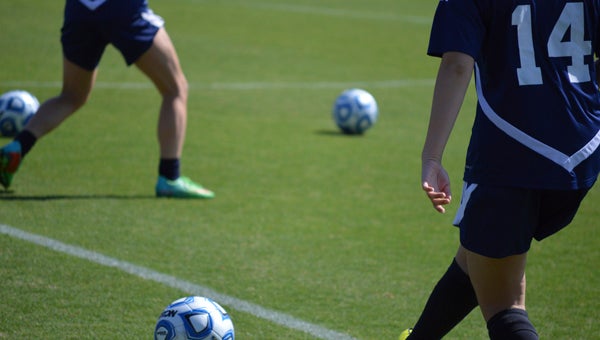Statement win, in more ways than one
Published 6:13 pm Tuesday, July 7, 2015

DAVID CUCCHIARA | DAILY NEWS
Women’s sports is on the rise throughout the country, including here in Beaufort County. The Washington girls’ soccer team’s run to the state championship in 2014 drew hundreds of spectators.
Some call it the most dominant team in United States sports history. Others say it featured the single most impressive individual performance in recent memory.
Whatever way you look at it, the U.S. women’s soccer team made more than just an on-the-field statement Sunday night against the defending World Cup champion Japan.
According to TV By The Numbers, a company that analyzes television ratings, 20.3 million people tuned in to Fox’s broadcast, drawing a 15.2 rating, nearly doubling the viewership of the 2011 U.S. vs. Japan World Cup.
The number means more Americans viewed a women’s soccer game than the NBA finals and the NHL’s Stanley Cup. The broadcast fell a little more than a million shy of the 2015 Belmont Stakes, which produced horseracing’s first Triple Crown winner since 1978. Even the World Cup postgame ceremony drew nearly 15 million spectators.
Move over men.
For years, the moment in the 1999 World Cup when Brandi Chastain ripped off her shirt, exposing the sports bra underneath, stood as the single most iconic image in American women’s soccer history, maybe even American women’s sports as a whole. While the Cup victory was notable (the second for U.S. soccer at the time), there are some who viewed the shirt removal as an act against deeply rooted gender standards, an act of celebration reserved for and accepted by only men. Whether it was intentional or simply the product of emotion, maybe that’s what made the moment so memorable. After all — it’s just soccer.
Sunday’s World Cup featured no shirt removals, no underlying feminist statements of any kind. It was just an entertaining, well-played game by a group of talented athletes striving for their sport’s most coveted prize. That, in itself, was the statement.
With all the viewers, the backdrop was set. And the ladies came through, tenfold, shattering the false stereotype that women’s sports aren’t worth watching. Sunday’s game was worth every minute, captivating even the most fair-weather soccer fan.
And for those discrediting individual athletic ability, Carli Lloyd’s 16-minute hat trick was the first in women’s World Cup history and only the second in World Cup history (England’s Geoff Hurst, 1966).
The game moved women’s sports and the game of soccer 10 steps ahead. It’s a national example of what’s happening on a case-to-case basis all over the country, including here in rural eastern North Carolina.
Women’s high-school sports like softball, soccer and volleyball are creeping up, if not matching the men, in terms of attendance, while the on-the-field product is also turning heads.
The concept of women’s sports being uninteresting or less entertaining than men’s is archaic, dating back to ancient times when women were barred from competing in, well, everything. For some reason, even after the fight for women’s suffrage and other pre-21st Century feminist movements, the belief is still engrained.
After Sunday, it’s belief holding on by the thinnest of threads.




